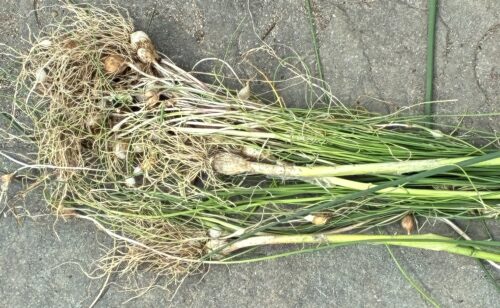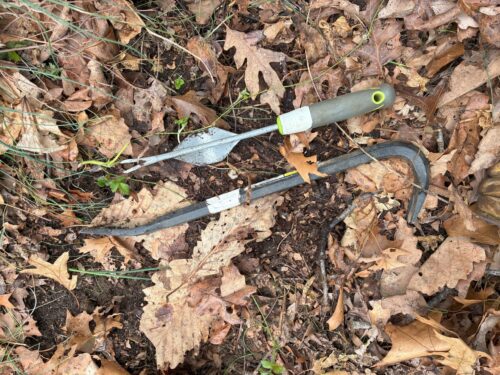Hover over images for detail:

Wild garlic and wild onion are similar in appearance, but while garlic has hollow tops, onion tops are flat; other non-native plants such as crocus and star-of-Bethlehem have a white stripe. Both wild garlic and wild onion appear in early spring in lawns and open areas; both can be removed in the same manner, and both are edible with recipes found online. Be sure to properly identify the plants. While all parts of wild garlic and onion are edible, green look-alikes without a strong aroma when broken may be toxic.

To remove wild garlic, start by gently removing tree leaves, rocks, or anything that may impede your access to where clumps of wild garlic grow from the ground. Also, uproot any other invasive plants that may be growing along with the wild garlic. Be sure to avoid native plants such as dewberry, blue violets, enchanter’s nightshade, Pennsylvania sedge, Virginia creeper, American holly, white avens, wood asters, and goldenrod that may grow in the area with wild garlic.
The best time of year to uproot wild garlic is mid-April through early May, following April showers when the ground is damp; and follow up in early June, using a leveraged forked weeding tool for a single tall plant or a small clump of wild garlic. For a large cluster of bulbs, use a wider tool, such as a trowel or even a small crowbar.
Click here for more information on uprooting wild garlic.

Start by grabbing a single stem or small clump of the wild garlic with one hand, and with the other hand, insert the forked leveraged weeder two or more inches from where the bulbs might be. Tilt the tool and push it underground two or more inches beneath where the plants emerge. Shift the tool handle down level with the ground so that the bulbs start to move and appear to release. Wiggle the plants back and forth to determine if the tip of the tool has made contact beneath the bulbs, and pry them out. Repeat until the bulbs emerge.
To reach over the plants, as on a slope, swing and dig with the hooked end of a crowbar.
Keep in mind that wild garlic bulbs can persist dormant in the soil for up to 6 years, and nothing sprayed above ground can kill dormant bulbs beneath the soil surface. Since any bulbs left on the ground may grow, solarizing them in clear bags, allowing them to cook for several weeks in full sun before disposal, is important to ensure they can’t regrow. Persistent management for at least 3 or 4 years is necessary to obtain complete control.
